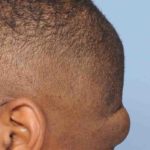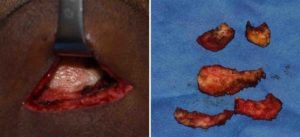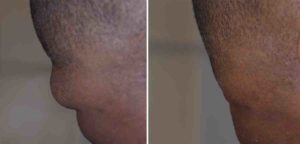Background: The back of the head is usually a smooth convex shape. While the amount of convexity will vary amongst different people, protrusions on its outer surface are not usually seen as aesthetically desirable. Thus the discrete occipital knob deformity stands out.
The occipital knob deformity is a well known central bony protrusion just above the bottom of the occipital bone. It sticks out like the knob in its name. It is most typically composed of a large growth of bone that develops centrally at the nuchal ridge line. It is a thicker than normal protrusion of bone which when reduced solves the occipital contour concern.
The occipital knob skull deformity is also known as the occipital bun or occipital horn. It is well known to occur in Neanderthal skulls but much less commonly so in modern man. Why it occurs is not known but it is always thought of as a pure bone excess. But in its aesthetic reduction the overlying soft tissue must be considered as well.



Highlights:
- The occipital knob deformity is not always a pure bony deformity.
- Some occipital knobs have a significant soft tissue component that must also be removed to optimize the flattening effect.
- The lowest horizontal skin crease should be used to reduce this type of occipital knob.
Dr. Barry Eppley
Indianapolis, Indiana


